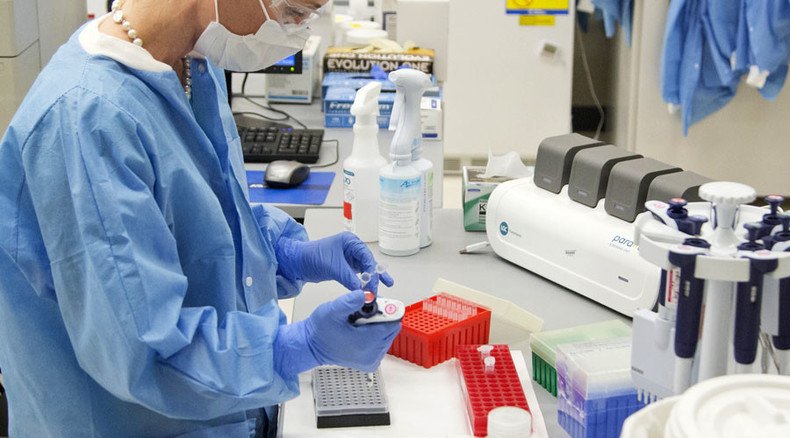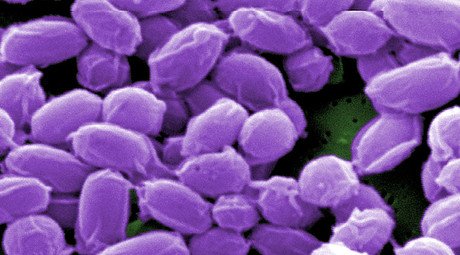Pentagon labs may have mishandled plague bacteria – CDC

The US Centers for Disease Control and Prevention is investigating laboratories run by the US Department of Defense for possibly mishandling, and improperly storing and shipping potentially live plague samples.
The Centers for Disease Control and Prevention (CDC) discovered a plague sample in a freezer outside the containment area of the Edgewood Chemical and Biological Center in Maryland last month, according to USA Today.
The sample was labeled inactive, yet the CDC "is conducting additional testing" for an ultimate determination on any potential infectiousness, Pentagon press secretary Peter Cook said, according to Stars and Stripes. The CDC is also investigating a strain of equine encephalitis discovered at Edgewood.
The Pentagon is up to mishandling four, four select agents, ah ha ha! http://t.co/62xH4Oubog#biosecuritypic.twitter.com/2zxHTErRFm
— Kelly Hills (@rocza) September 11, 2015The public is not in danger from the plague or encephalitis specimens found at the lab, Army spokesman Dov Schwartz told USA Today. The conclusion was based on testing done on researchers who had worked with the specimens. Conclusive test results are expected by the end of September.
"These developments directly contributed to the Army's decision to issue last week's safety review and the extension of the existing moratorium on the handling of select agents and toxins," the Army said.
The US Army announced last week that, out of caution, it was instituting a moratorium on all research activity at nine Pentagon labs that have worked with toxins, pathogens, and bacteria after an incident at a lab in Utah in which live anthrax was sent to 192 labs spread throughout all 50 states and nine other countries.
READ MORE: Pentagon's anthrax blunder reveals ‘major protocol problems’
The CDC’s investigations at the facilities led to the discovery of the plague bacteria. Cook could not confirm if the plague strain is related to Yersinia pestis, which led to the bubonic plague that killed millions in the 14th century, Stars and Stripes reported.
Facilities investigated by the CDC include the Dugway Proving Ground in Utah, and three labs in Maryland: the Army Medical Research Institute of Infectious Diseases, the Edgewood Chemical and Biological Center, and the Naval Medical Research Center.
READ MORE: Army shipped live anthrax for 10 years, couldn't effectively kill bacteria - CDC
The other five labs subject to the Army’s moratorium and safety reviews include the 711th Personnel Wing at Wright Patterson Air Force Base in Ohio; US Naval Medical Research Unit 3 in Egypt; US Naval Medical Research Unit 6 in Peru; the US Army Soldier Systems Center in Massachusetts; and the Naval Surface Warfare Center in Virginia.
"CDC has identified a number of transfers of concern involving multiple organisms," the CDC said in a statement. "At this time, there is nothing to suggest risk to the health of workers or the general public."
CDC has been actively responding to an uptick in #plague activity throughout the western US. http://t.co/Ey3PJXOJcfpic.twitter.com/MvTMSnjsDS
— CDC NCEZID (@CDC_NCEZID) September 11, 2015Most of the transfers were between Pentagon labs, the CDC said. The Army maintained that all materials had been handled properly, and that no researchers were exposed.
From April 1 to August 28, there were 11 cases of the plague reported in the US, which have resulted in three deaths. The victims were residents of Arizona, California, Colorado, Georgia, New Mexico, Oregon, and Utah, with two cases connected to exposures at or around Yosemite National Park. The patients ranged from age 14 to 79, and nine of the 11 were male.














